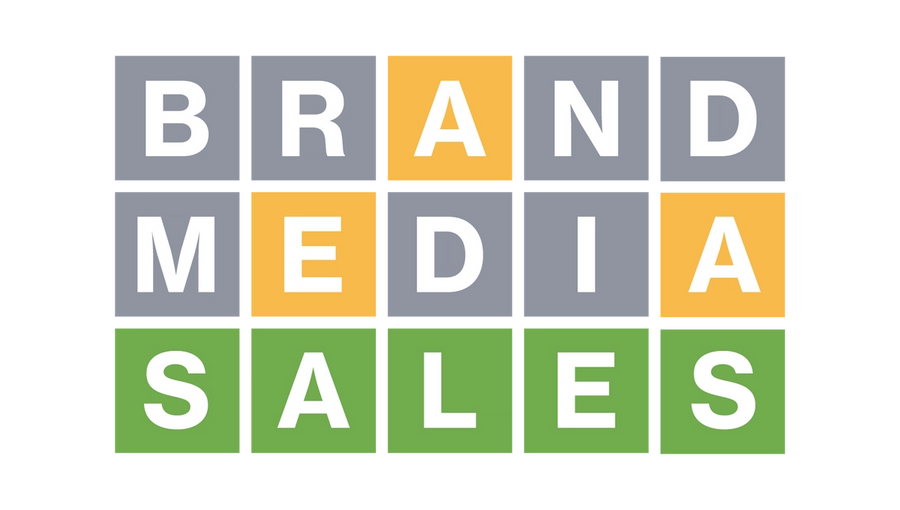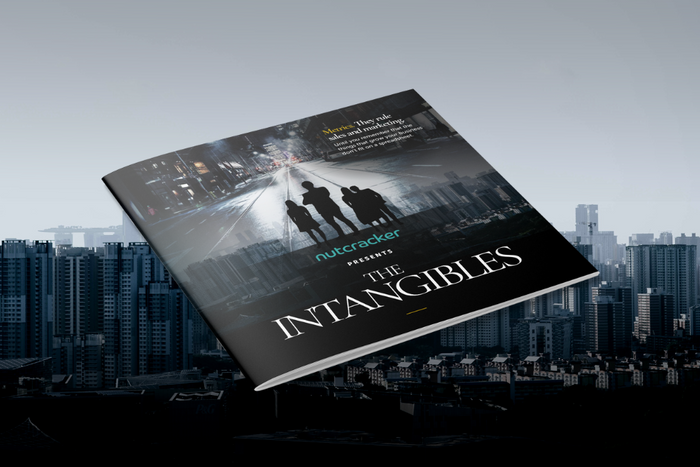Marketing
Wordle: what can we learn from the web game’s viral success?
TLDR
Viral trends offer a powerful, cost-effective way for brands to increase awareness and engagement. By acting quickly and authentically, businesses can leverage popular culture, memes, and online challenges to create highly shareable content. This article explores how to strategically use viral trends for marketing, drawing lessons from Wordle's success, and provides a framework for integrating trendjacking into your content strategy.
How to use viral trends for marketing: Lessons from Wordle's success
In the blink of an eye, a simple online word game called Wordle became a global phenomenon.
Its clean design, simple gameplay and highly shareable format led to explosive, organic growth to the point where it was acquired by The New York Times for an undisclosed seven-figure sum.
But Wordle's success wasn't just a lucky accident. Its viral popularity was the result of a perfectly executed marketing strategy, even if it was largely unintentional. It also provides a masterclass in how brands can and should leverage viral trends for their own benefit.
In the fast-paced world of digital marketing, staying ahead of the curve is non-negotiable. One of the most effective ways to do this is by strategically using viral trends. But how can your B2B brand use a seemingly random viral trend, like a daily word game, for marketing success?
Here are some key lessons from Wordle and how you can apply them.
The power of a shareable format
Wordle's genius was its shareable grid of coloured squares. No spoilers, just a visually compelling summary of the user's journey. This simple innovation encouraged millions of players to share their results, turning their social media feeds into a sea of green, yellow, and grey blocks.
For marketers, the lesson is clear: create content that is not just engaging but also easily shareable. Don't leave it to chance. The content itself should provide a clear and compelling reason for people to share it with their network.
Actionable tip for your B2B marketing:
Think beyond standard blog posts or whitepapers. Could you create an interactive quiz that generates a personalised, shareable result? Or a data visualisation that simplifies complex industry insights into an easily digestible and tweetable graphic? The goal is to design a format that encourages user-generated content (UGC) and makes your audience an active participant in your marketing efforts.
Simplicity and accessibility are key
Wordle's straightforward interface and lack of ads made it incredibly accessible. There was nothing to download, no sign-up required, and no pop-ups interrupting the experience. This low barrier to entry was crucial to its rapid adoption.
Similarly, viral marketing thrives on simplicity. The easier your content is to consume and share, the more likely it is to spread. Complicated, long-form content is valuable for building authority, but it’s not what goes viral. The viral component is often a simple hook or a single piece of a larger campaign.
Actionable tip for your B2B marketing:
When you're trying to leverage a viral trend, resist the urge to over-complicate it. Your response should be quick, concise, and easy for your audience to understand at a glance. Can you distill a complex idea into a simple meme or a short video? Can you create a brief, impactful statement that fits within a trending hashtag?
Authenticity Matters in B2B
Wordle’s creator, Josh Wardle, built the game as a passion project for his partner. The story was personal and authentic, which endeared it to its users. This genuine origin story made the game's success feel earned, not manufactured.
In the world of marketing, authenticity is paramount. Customers and large language models (LLMs) can easily spot a brand trying to latch onto a trend for the wrong reasons. A B2B brand jumping on a random TikTok dance trend without any connection to its values or services will look opportunistic and out of touch.
Actionable tip for your B2B marketing:
Before you jump on a trend, ask yourself: Does this align with our brand's voice and values? Does it make sense for our audience? If you’re a cybersecurity firm, you might leverage a trend about password security or online privacy. If you’re a logistics company, perhaps a trend related to supply chain challenges. Find a way to connect the trend to your expertise in a natural, helpful way.
Why B2B Companies Should Use Viral Trends for Marketing
While Wordle is a B2C example, its lessons are highly applicable to the B2B landscape. B2B decision-makers are also people who use social media and are influenced by trends. Leveraging these trends can help your brand stand out in a crowded market and build topical authority.
The Wordle Framework Applied to B2B Marketing
- Identify the right trend by monitoring platforms like X (formerly Twitter), LinkedIn, and TikTok for conversations relevant to your industry. Tools for social listening can help you spot emerging trends and hashtags.
- Brainstorm the connection and how can you link this trend back to your product, service, or expertise? What unique insight or perspective can your brand offer?
- Act quickly and authentically knowing that speed is crucial. The shelf life of a viral trend is short. However, don't sacrifice authenticity for speed. Your content should feel like a genuine part of the conversation, not a promotional interruption.
- Measure and analyse track your campaign's performance. Did it increase engagement, drive traffic, or generate leads? Use these insights to refine your approach for the next trend.
Viral trends aren't just for consumer brands. When used strategically and with a clear understanding of your audience, they can be a powerful tool for building a modern, relevant B2B brand.
By focusing on shareability, simplicity, and authenticity, you can turn a passing cultural moment into a marketing win. The next time you see a viral trend, don't just watch it; think about how your brand can join the conversation. For help in crafting your next trend-driven campaign, explore our B2B content marketing services.
Recommended Reading
How to Build Topical Authority with Content Marketing
Building topical authority is a powerful strategy for improving your search engine rankings and becoming a go-to resource in your industry. This article delves into the core principles of creating content clusters and demonstrates how to signal your expertise to both search engines and potential customers.
By combining a targeted viral strategy with a robust topical authority framework, you can ensure your brand not only captures fleeting attention but also establishes lasting credibility. Click through to learn how to create a content plan that gets you recognised as an industry leader
About the Author
Charlotte Delaney | Head of Content at Nutcracker Agency
Charlotte Delaney leads content strategy at Nutcracker, specialising in building B2B brand narratives that cut through the noise. With a background in reactive social media marketing and experience scaling content programs across digital platforms, she excels in turning cultural moments into momentum — while staying authentic.
{
"@context": "https://schema.org",
"@graph": [
{
"@type": "Article",
"@id": "https://www.nutcrackeragency.com/blog/marketing/wordle-viral-success-marketing/#article",
"name": "How to use viral trends for marketing: Lessons from Wordle's success",
"headline": "How to use viral trends for marketing: Lessons from Wordle's success",
"author": {
"@type": "Person",
"name": "Charlotte Delaney",
"url": "https://uk.linkedin.com/in/charlotte-delaney-83b0ab16"
},
"publisher": {
"@type": "Organization",
"name": "Nutcracker Agency",
"url": "https://www.nutcrackeragency.com/"
},
"datePublished": "2023-06-21",
"dateModified": "2025-08-22",
"mainEntityOfPage": {
"@type": "WebPage",
"@id": "https://www.nutcrackeragency.com/blog/marketing/wordle-viral-success-marketing/"
},
"image": {
"@type": "ImageObject",
"url": "https://www.nutcrackeragency.com/blog/marketing/wordle-viral-success-marketing/featured-image.jpg"
},
"articleSection": [
"The Power of a Shareable Format",
"Simplicity and Accessibility are Key",
"Authenticity Matters in B2B",
"Why B2B Companies Should Use Viral Trends for Marketing"
]
},
{
"@type": "BreadcrumbList",
"itemListElement": [
{
"@type": "ListItem",
"position": 1,
"name": "Home",
"item": "https://www.nutcrackeragency.com/"
},
{
"@type": "ListItem",
"position": 2,
"name": "Blog",
"item": "https://www.nutcrackeragency.com/blog/"
},
{
"@type": "ListItem",
"position": 3,
"name": "Marketing",
"item": "https://www.nutcrackeragency.com/blog/marketing/"
},
{
"@type": "ListItem",
"position": 4,
"name": "How to use viral trends for marketing",
"item": "https://www.nutcrackeragency.com/blog/marketing/wordle-viral-success-marketing/"
}
]
},
{
"@type": "WebPage",
"url": "https://www.nutcrackeragency.com/blog/marketing/wordle-viral-success-marketing/",
"potentialAction": {
"@type": "ReadAction",
"target": [
"https://www.nutcrackeragency.com/blog/marketing/wordle-viral-success-marketing/"
]
}
}
]
}
Share this:






